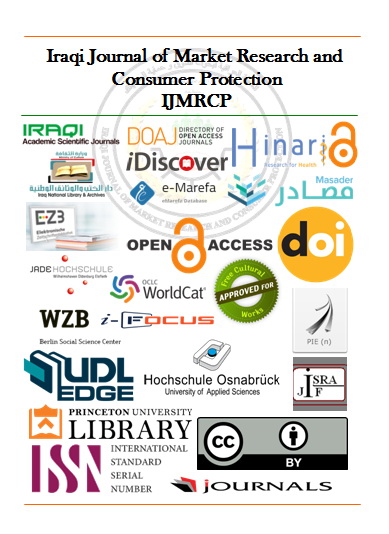SELECTIVE EXTRACTION OF GLIMEPIRIDE IN PHARMACEUTICAL PREPARATION AND IN HUMAN SERUM VIA SYNTHESIZED MIP-SPE TECHNIQUE
SELECTIVE EXTRACTION OF GLIMEPIRIDE IN PHARMACEUTICAL PREPARATION AND IN HUMAN SERUM VIA SYNTHESIZED MIP-SPE TECHNIQUE
DOI:
https://doi.org/10.28936/10.28936/(1)jmracpc11.2.2019Keywords:
Isotherm process, Glimepiride, (Molecular Imprinted Polymers) MIP, Serum, (Solid-Phase Extraction) SPEAbstract
This paper demonstrates that the synthesizing and storage of molecular-imprinted polymers (MIP) at room temperature using bulk polymerisation of Glimepiride (Glim.) is characterized by high sensitivity, reduced costs, increased stability, and extended life. The research used 1:15:20 mmol ratios of template, monomer and cross-linking agents for the polymerisation in order to ensure an appropriate adsorption capacity. Benzoyl peroxide BPO was employed as the initiator for the functional monomer Allyl chloride C3H5Cl , cross-linked with Ethylene glycol dimethacrylate EGDMA C10H14O4, thereby creating MIP for Glimepiride (Glim-MIP) that could be characterised with UV-Visible Spectrophotometry at 274.5nm, for pharmaceutical drugs. Fourier-transform infrared spectroscopy (FTIR) and Scanning electron microscopy (SEM) was used for the human serum. The elution process that was applied to the template (Glim.) from the Glim-MIP created cavities that were caused by the porogenic mixture solvents that were created from (acetic acid, methanol) 1:9 respectively, successfully removed by repeated washing for 20 hours, the polymer was dried at room temperature. The maximum adsorption capacity was 11.7797 µmol/g using (0.1) g weight of Glim-MIP. which adhered to the Langmuir isotherm model. A solid-phase extraction (SPE) syringe packed with molecular imprinted polymers (MIPs) was employed to selectively separate and pre-concentrate the Glimepiride in multiple pharmaceutical drugs from several sources. The human serum was based on the use of deionized water to dilute the serum, followed by heating of the serum with methanol. Subsequently, few drops of 1N hydrochloric acid were applied to detect Glimepiride at UV region 274.5 nm by applying the standard addition method.
Published
Issue
Section
License
Copyright (c) 2024 Iraqi Journal of Market Research and Consumer Protection

This work is licensed under a Creative Commons Attribution 4.0 International License.





